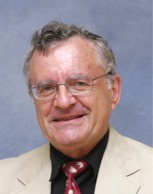“Hearts and minds”, the phrase goes. Reason and emotion. Logic and passion. Left brain is logic, and language, right brain is emotion and feeling.
New research by a Canadian doctor, Dr. J. Andrew Armour,* reveals a stunning new finding: our hearts actually have their own nervous system, packages of ‘neurons’ (nerve cells specially designed to conduct nerve impulses), that have memories! This work gives new meaning to the phrase: “Listen to your heart!”. Armour’s recent monograph describes a controversial, newly emerging view of the heart as a “complex, self-organized system that maintains a continuous two-way dialogue with the brain and the rest of the body.”
Brandeis University researcher Susan Birren has studied the mechanisms of how sympathetic neurons in the heart and cholinergic neurons in the brain are regulated and communicate. Her work reveals “just how sympathetic these two entities are to each other.” “Using rats and mice as model organisms, neurobiologist Susan Birren’s research is helping to demystify the complex relationships that govern neuron development and function in the heart and the brain. The questions are fundamental: How do cells in the nervous system communicate with each other?” (Brandeis website).
Recent TV series have shown people who received heart transplants, and who have taken on some of the personalities and memories of their donors. Experts, of course, were skeptical. But now comes Dr. Armour’s findings, including microscope photographs of the neuron cells in the brain. Other evidence comes from heart-transplant surgeons. When hearts are transplanted, the moment their blood supply is renewed they begin to beat. How? Apparently within the heart are neurons, including related memories, that help hearts “remember” how to beat and what they are supposed to do when blood begins to flow. It is a remarkable phenomenon. Could it be that those neurons contain other memories, of the person whose body they occupied?
Hearts and minds? Well, apparently, hearts have their own minds. One more example of the wondrous human body, as it has evolved over tens of thousands of years.
*Neurocardiology: Anatomical and Functional Principles. By J. Andrew Armour, M.D., Ph.D.


Leave a comment
Comments feed for this article